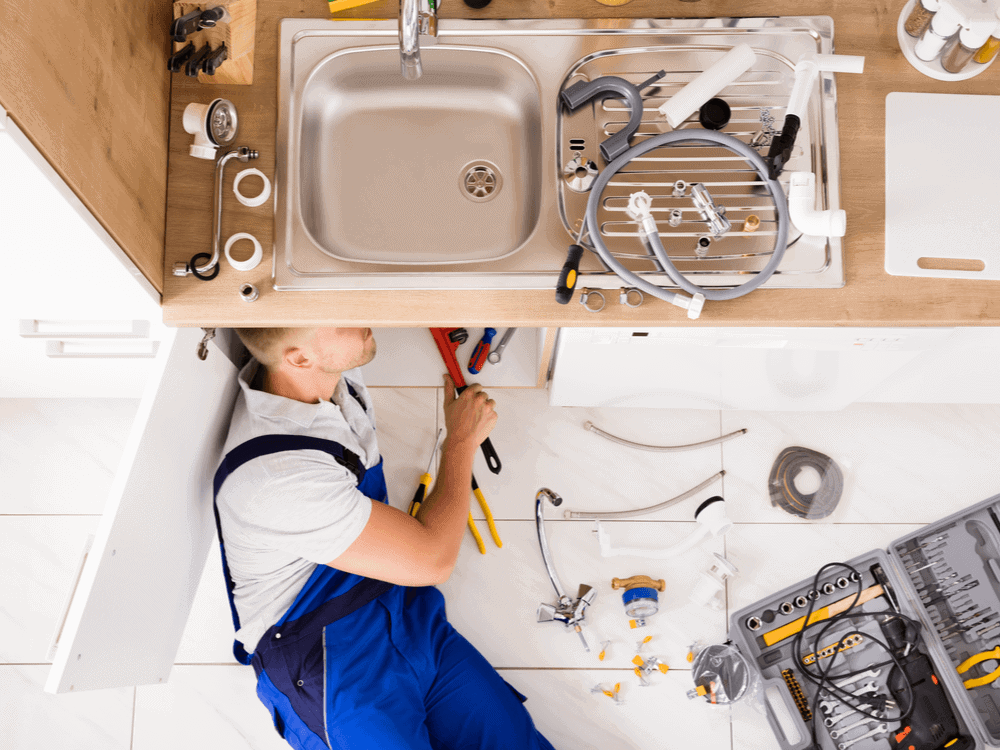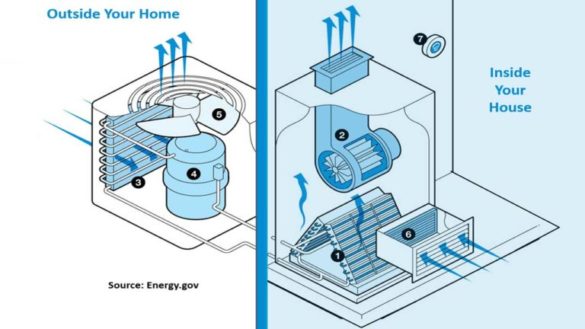Key Components of Your Home's Plumbing System
Key Components of Your Home's Plumbing System
Blog Article
This post on the next paragraphs about Anatomy of a House: Understanding the Components is seriously enlightening. Don't overlook it.

Understanding exactly how your home's plumbing system works is important for every single home owner. From providing clean water for drinking, food preparation, and bathing to safely removing wastewater, a well-kept plumbing system is crucial for your household's wellness and comfort. In this detailed overview, we'll check out the detailed network that makes up your home's plumbing and offer ideas on maintenance, upgrades, and managing usual problems.
Intro
Your home's pipes system is more than just a network of pipes; it's a complex system that guarantees you have access to tidy water and efficient wastewater elimination. Understanding its parts and exactly how they collaborate can aid you prevent pricey fixings and ensure everything runs smoothly.
Fundamental Components of a Plumbing System
Pipelines and Tubing
At the heart of your pipes system are the pipelines and tubing that carry water throughout your home. These can be made from different products such as copper, PVC, or PEX, each with its benefits in regards to durability and cost-effectiveness.
Components: Sinks, Toilets, Showers, etc.
Components like sinks, commodes, showers, and bathtubs are where water is used in your home. Comprehending exactly how these components connect to the pipes system aids in identifying problems and intending upgrades.
Valves and Shut-off Points
Valves manage the flow of water in your pipes system. Shut-off shutoffs are critical during emergency situations or when you need to make repairs, permitting you to separate parts of the system without disrupting water circulation to the entire residence.
Water System System
Key Water Line
The main water line attaches your home to the community water supply or a private well. It's where water enters your home and is dispersed to numerous components.
Water Meter and Pressure Regulator
The water meter steps your water usage, while a pressure regulator makes sure that water moves at a risk-free stress throughout your home's pipes system, avoiding damage to pipelines and components.
Cold Water vs. Warm water Lines
Comprehending the difference between cold water lines, which provide water straight from the main, and warm water lines, which carry warmed water from the hot water heater, helps in fixing and planning for upgrades.
Drain System
Drain Pipes Water Lines and Traps
Drain pipes lug wastewater far from sinks, showers, and bathrooms to the sewer or septic tank. Catches stop sewage system gases from entering your home and likewise trap particles that could create blockages.
Ventilation Pipelines
Air flow pipes permit air into the water drainage system, stopping suction that could reduce water drainage and cause catches to vacant. Appropriate ventilation is essential for keeping the honesty of your pipes system.
Relevance of Correct Drainage
Making sure proper water drainage prevents back-ups and water damage. Regularly cleansing drains pipes and maintaining catches can avoid expensive repair services and prolong the life of your plumbing system.
Water Heating Unit
Sorts Of Water Heaters
Hot water heater can be tankless or traditional tank-style. Tankless heaters warm water as needed, while containers store heated water for prompt use.
Updating Your Pipes System
Factors for Updating
Upgrading to water-efficient fixtures or changing old pipelines can enhance water high quality, reduce water costs, and increase the worth of your home.
Modern Plumbing Technologies and Their Advantages
Discover modern technologies like smart leakage detectors, water-saving toilets, and energy-efficient water heaters that can save cash and decrease ecological influence.
Price Considerations and ROI
Determine the ahead of time expenses versus long-lasting cost savings when taking into consideration pipes upgrades. Many upgrades pay for themselves with lowered utility costs and fewer repair work.
Just How Water Heaters Connect to the Pipes System
Understanding how water heaters attach to both the cold water supply and hot water distribution lines helps in identifying concerns like not enough warm water or leakages.
Upkeep Tips for Water Heaters
On a regular basis purging your hot water heater to remove sediment, inspecting the temperature settings, and checking for leaks can prolong its life expectancy and boost power performance.
Common Pipes Problems
Leaks and Their Reasons
Leaks can occur because of maturing pipes, loose installations, or high water stress. Dealing with leakages quickly avoids water damages and mold growth.
Blockages and Obstructions
Blockages in drains pipes and toilets are commonly brought on by flushing non-flushable things or a buildup of oil and hair. Utilizing drainpipe screens and being mindful of what drops your drains can stop blockages.
Signs of Plumbing Troubles to Expect
Low water pressure, sluggish drains pipes, foul odors, or abnormally high water costs are indications of potential pipes issues that should be resolved immediately.
Plumbing Maintenance Tips
Normal Assessments and Checks
Schedule yearly plumbing inspections to capture issues early. Look for indicators of leaks, deterioration, or mineral accumulation in taps and showerheads.
DIY Upkeep Tasks
Straightforward tasks like cleansing faucet aerators, looking for bathroom leakages using color tablet computers, or protecting exposed pipelines in cool environments can stop major plumbing issues.
When to Call an Expert Plumbing Technician
Know when a plumbing concern needs specialist competence. Attempting intricate repair services without correct expertise can lead to even more damage and higher repair service costs.
Tips for Reducing Water Usage
Easy practices like repairing leaks without delay, taking much shorter showers, and running complete loads of washing and meals can conserve water and reduced your energy costs.
Eco-Friendly Plumbing Options
Consider lasting pipes products like bamboo for floor covering, which is durable and environmentally friendly, or recycled glass for counter tops.
Emergency Readiness
Steps to Take During a Pipes Emergency
Know where your shut-off shutoffs lie and how to turn off the water system in case of a ruptured pipeline or major leakage.
Value of Having Emergency Calls Useful
Maintain get in touch with details for local plumbers or emergency services readily available for fast action throughout a plumbing crisis.
Environmental Impact and Preservation
Water-Saving Fixtures and Home Appliances
Setting up low-flow taps, showerheads, and toilets can considerably lower water usage without giving up efficiency.
Do It Yourself Emergency Fixes (When Appropriate).
Momentary fixes like utilizing air duct tape to patch a leaking pipeline or positioning a bucket under a leaking tap can reduce damages till a specialist plumbing gets here.
Conclusion.
Comprehending the composition of your home's pipes system empowers you to maintain it efficiently, conserving time and money on repair work. By following regular upkeep regimens and staying informed concerning contemporary pipes innovations, you can ensure your plumbing system runs successfully for several years to find.
HOW YOUR PLUMBING SYSTEM WORKS
Which Pipes Do What?
Blue lines = fresh water supply entering the building Red lines = hot water supply entering the building Grey lines = pipes carrying waste away from the building and venting pipes carrying gases away from the building (through the roof) YOUR MAIN PLUMBING SYSTEMS
There are two main plumbing systems that support your home s basic plumbing needs one that brings clean water into your home, and one that sends dirty water away from your home. Connected to the toilet, bath, shower, and other faucets in your home, these two systems keep your water flowing in the right directions.
ACCESSING FRESH WATER
Fresh and clean water is brought into your home through the main water supply line . Filtered through one pipe, this water is pressured to flow into the various fixtures in your home at any given time.
This water can be sourced from a well located on your property, a pond or river (mostly cottages), or, as in most cases, from the city s municipal water treatment centre. However, it is important to note that water that is untreated, such as the water siphoned from ponds or rivers, may not be safe to drink. Personal water supplies always need to be treated for hardness and contaminants before consumed.
MUNICIPAL WATER SUPPLIES
Improve taste and odour Remove sediment Eliminate hardness Reduce chlorine COLD WATER SUPPLY VS. HOT WATER SUPPLY
Cold water flows into your home or building through the service line, which then distributes hot or cold water to your fixtures. This line is most commonly run through a central column that runs floor to floor. Hot water runs in short and straight pipes as the longer the pipeline, the more heat that will be lost in the transfer. Having shorter pipes also allows residents to access hot water more quickly.
WASTE WATER SYSTEM
Your wastewater system is divided into two parts pipes that send wastewater away from your home and venting pipes that send sewer gas away from your home. Sewage water travels through pipes that flush the water and waste towards local sewers that are operated and managed by your city or town. Most sewer systems rely on gravity to move the wastewater to where it needs to go.
The further away from your toilet or sink, the larger wastewater pipes become. This allows for waste to be disposed of from various parts of your home or business at once without pipe blockages. The angle and flow of these pipes are also essential for keeping your waste pipes clear of build up.
https://harrisplumbing.ca/how-your-home-plumbing-system-works/

I was shown that article about Exploring Your Homes Plumbing Anatomy from a pal on another site. Enjoyed our piece of writing? Please share it. Help other people find it. Many thanks for being here. Return soon.
Visit Link Report this page